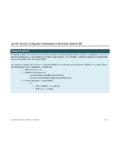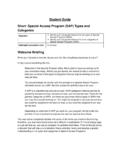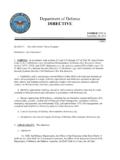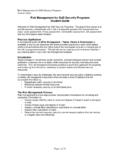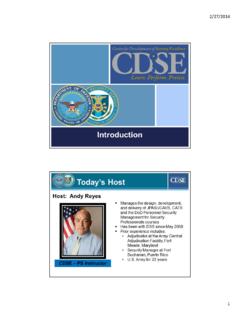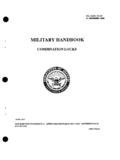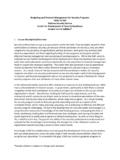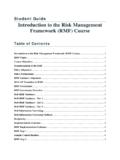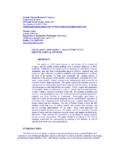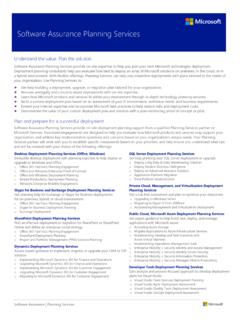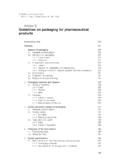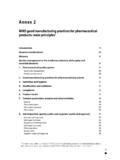Transcription of National Information Assurance (IA) Glossary - CDSE
1 Committee on National Security Systems National Information Assurance (IA) Glossary This document prescribes minimum standards. Your department or agency may require further implementation guidelines. CNSS Instruction No. 4009 26 April 2010 CHAIR FOREW FOREWORD 1. The Committee on National Security Systems (CNSS) Glossary Working Group convened to review and update the National Information Assurance Glossary , CNSSI 4009, dated June 2006. This revision of CNSSI 4009 incorporates many new terms submitted by the CNSS Membership. Most of the terms from the 2006 version of the Glossary remain, but a number of them have updated definitions in order to remove inconsistencies among the communities. 2. The Glossary Working Group set several overall objectives for itself in producing this version: Resolve differences between the definitions of terms used by the DOD, IC, and Civil Agencies (NIST Glossary ) to enable all three to use the same Glossary (and move towards shared documentation and processes).
2 Accommodate the transition from Certification and Accreditation (C&A) terms in current use to the terms now appearing in documents produced by the C&A Transformation initiative. Both sets of terms have been included in this update of the Glossary . Ensure consistency among related and dependent terms. Include terms that are important to the risk management goal of C&A transformation and to the concept of Information sharing. Review existing definitions to reflect, as appropriate a broader enterprise perspective vice a system perspective. Strike an appropriate balance between macro terms and micro terms ( , include terms that are useful in writing and understanding documents dealing with IA policies, directives, instructions, and guidance, and strike terms that are useful only to specific IA subspecialties). 3. Many cyber terms are coming into vogue and the Glossary Working Group has tried to include significant examples that have a useful distinction when compared to existing Information Assurance terms.
3 A number of terms recommended for inclusion in this version of the Glossary were not added often because they appeared to have a narrow application or they were submitted after the deadline. But the net affect has been to add quite a few new terms to the Glossary . 4. When Glossary terms have common acronyms, we have noted the acronym with the term and added the acronym to the acronym list. In some instances, there may be several meanings for the same acronym, and in that case we have tried to list all the common IA meanings. Note that some acronyms are self-explanatory, and so there is no definition of these acronyms in the Glossary itself. 5. Some terms from the previous version were deleted because they had been previously marked as candidates for deletion ( ) and no one asked to keep them, many other terms have been updated or added, and some terms are newly identified as If a term that has been deleted or marked as is still of value and needed in your environment, please resubmit the term with a definition based on the following criteria: 1) specific relevance to Information Assurance ; 2) economy of words; 3) National Manager accuracy; 4) broad applicability; and 5) clarity.
4 Use these same criteria to recommend any changes to existing definitions or to suggest new terms (definitions must be included with any new terms). When recommending a change to an existing definition, please note how that change might affect other terms. In all cases, send your suggestions to the CNSS Secretariat via e-mail or fax at the number found below. 6. We recognize that, to remain useful, a Glossary must be in a continuous state of coordination, and we encourage your review and welcome your comments as new terms become significant and old terms fall into disuse or change meaning. The goal of the Glossary Working Group is to keep the Glossary relevant and a tool for commonality among the IA community. 7. Representatives of the CNSS may obtain copies of this instruction on the CNSS Web Page FOR THE National MANAGER: /s/ RICHARD C. SCHAEFFER, JR. CNSSI No. 4009 1 National Information Assurance (IA) Glossary This instruction applies to all Government Departments, Agencies, Bureaus and Offices; supporting contractors and agents; that collect, generate process, store, display, transmit or receive classified or sensitive Information or that operate, use, or connect to National Security Systems (NSS), as defined herein.
5 A access Ability and means to communicate with or otherwise interact with a system, to use system resources to handle Information , to gain knowledge of the Information the system contains, or to control system components and functions. access authority An entity responsible for monitoring and granting access privileges for other authorized entities. access control The process of granting or denying specific requests: 1) for obtaining and using Information and related Information processing services; and 2) to enter specific physical facilities ( , Federal buildings, military establishments, and border crossing entrances). Access Control List (ACL) 1. A list of permissions associated with an object. The list specifies who or what is allowed to access the object and what operations are allowed to be performed on the object. 2. A mechanism that implements access control for a system resource by enumerating the system entities that are permitted to access the resource and stating, either implicitly or explicitly, the access modes granted to each entity.
6 Access control mechanism Security safeguards ( , hardware and software features, physical controls, operating procedures, management procedures, and various combinations of these) designed to detect and deny unauthorized access and permit authorized access to an Information system. access level A category within a given security classification limiting entry or system connectivity to only authorized persons. access list Roster of individuals authorized admittance to a controlled area. access profile Association of a user with a list of protected objects the user may access. CNSSI No. 4009 2 access type Privilege to perform action on an object. Read, write, execute, append, modify, delete, and create are examples of access types. See write. accountability Principle that an individual is entrusted to safeguard and control equipment, keying material, and Information and is answerable to proper authority for the loss or misuse of that equipment or Information .
7 Accounting Legend Code (ALC) Numeric code used to indicate the minimum accounting controls required for items of accountable COMSEC material within the COMSEC Material Control System. accounting number Number assigned to an item of COMSEC material to facilitate its control. accreditation Formal declaration by a Designated Accrediting Authority (DAA) or Principal Accrediting Authority (PAA) that an Information system is approved to operate at an acceptable level of risk, based on the implementation of an approved set of technical, managerial, and procedural safeguards. See authorization. accreditation boundary 1. Identifies the Information resources covered by an accreditation decision, as distinguished from separately accredited Information resources that are interconnected or with which Information is exchanged via messaging. Synonymous with Security Perimeter. 2. For the purposes of identifying the Protection Level for confidentiality of a system to be accredited, the system has a conceptual boundary that extends to all intended users of the system, both directly and indirectly connected, who receive output from the system.
8 See authorization boundary. accreditation package Product comprised of a System Security Plan (SSP) and a report documenting the basis for the accreditation decision. Accrediting Authority Synonymous with Designated Accrediting Authority (DAA). See also Authorizing Official. active attack An attack that alters a system or data. active content Software in various forms that is able to automatically carry out or trigger actions on a computer platform without the intervention of a user. add-on security Incorporation of new or additional hardware, software, or firmware safeguards in an operational Information system. adequate security Security commensurate with the risk and magnitude of harm resulting from the loss, misuse, or unauthorized access to or modification of Information . Note: This includes assuring that Information systems operate effectively and provide appropriate confidentiality, integrity, and availability, through the use of cost-effective management, personnel, operational, and technical controls.
9 CNSSI No. 4009 3 Advanced Encryption Standard (AES) A Government-approved cryptographic algorithm that can be used to protect electronic data. The AES algorithm is a symmetric block cipher that can encrypt (encipher) and decrypt (decipher) Information . Advanced Key Processor (AKP) A cryptographic device that performs all cryptographic functions for a management client node and contains the interfaces to 1) exchange Information with a client platform, 2) interact with fill devices, and 3) connect a client platform securely to the primary services node (PRSN). advisory Notification of significant new trends or developments regarding the threat to the Information systems of an organization. This notification may include analytical insights into trends, intentions, technologies, or tactics of an adversary targeting Information systems. alert Notification that a specific attack has been directed at an organization s Information systems. alternate COMSEC custodian Individual designated by proper authority to perform the duties of the COMSEC custodian during the temporary absence of the COMSEC custodian.
10 Anti-jam Countermeasures ensuring that transmitted Information can be received despite deliberate jamming attempts. anti-spoof Countermeasures taken to prevent the unauthorized use of legitimate Identification & Authentication (I&A) data, however it was obtained, to mimic a subject different from the attacker. application Software program that performs a specific function directly for a user and can be executed without access to system control, monitoring, or administrative privileges. Approval to Operate (ATO) The official management decision issued by a DAA or PAA to authorize operation of an Information system and to explicitly accept the residual risk to agency operations (including mission, functions, image, or reputation), agency assets, or individuals. See authorization to operate. asset A major application, general support system, high impact program, physical plant, mission critical system, personnel, equipment, or a logically related group of systems.

